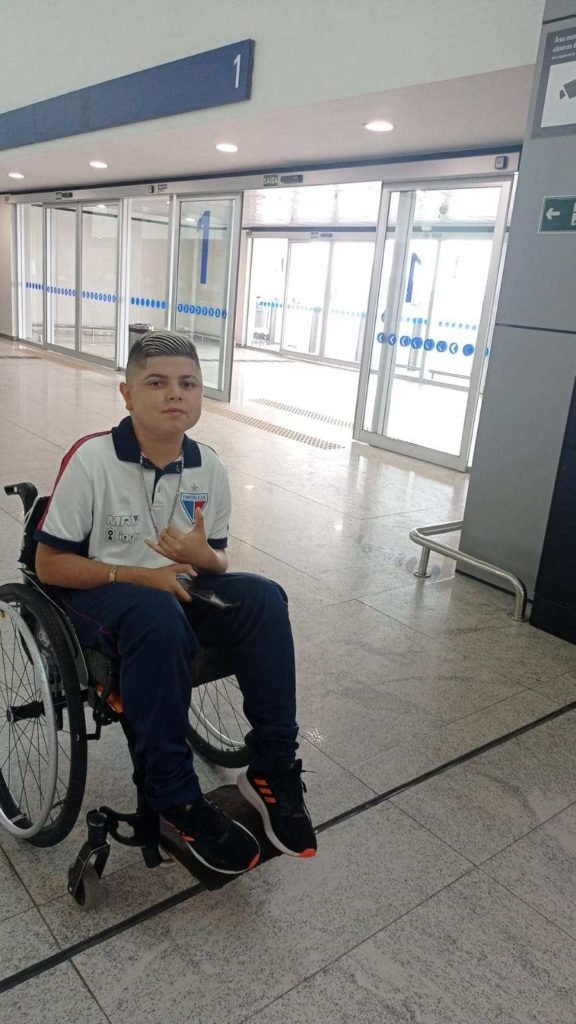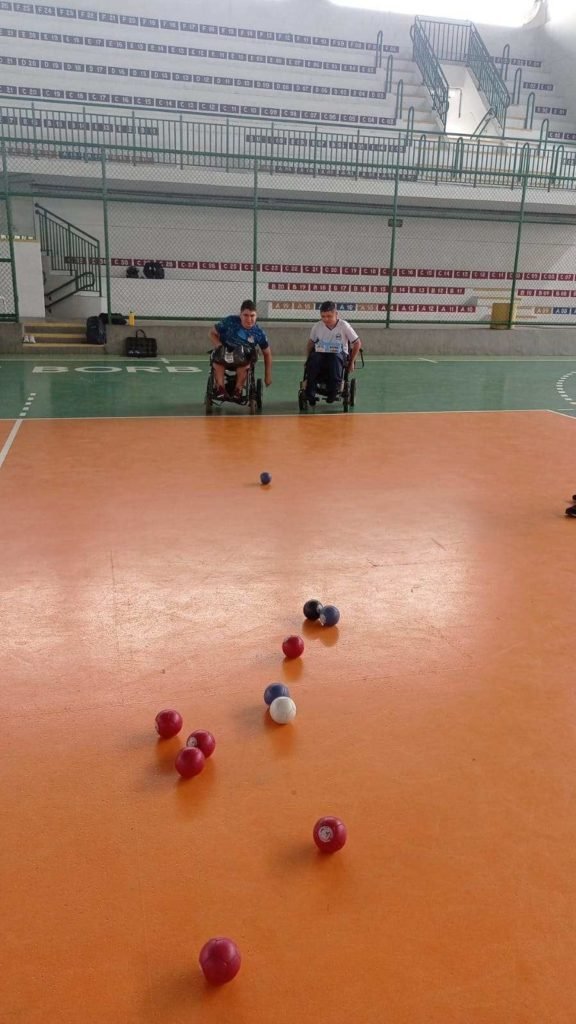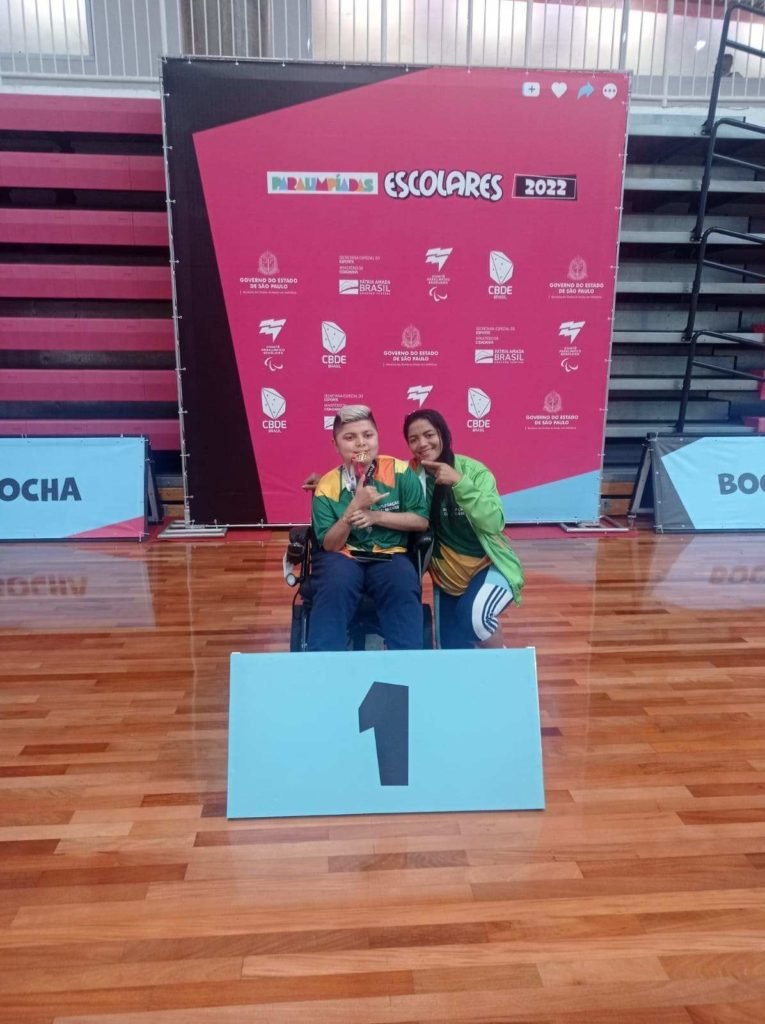“My dream was to be a soccer player”, says Myqueias Silva Castelo, 18 years old, from Fortaleza (CE). His dream, like his whole life, had to be readjusted when the student discovered that he had Duchenne muscular dystrophy, a disease known by its acronym DMD.
Also called Duchenne syndrome, the problem has genetic causes and affects one child in every 150,000 births. A manifests itself with a progressive muscle weakness that, in more severe cases, impairs the functioning of the heart and lungs.
In the case of Myqueias, DMD kept him away from football a few months after the definitive diagnosis. At 11 years and six months old, he had to switch to using a wheelchair. “I manage to do many things on my own: I take a shower, I eat, but I need help at times, mainly to change from chairs for daily use to those for the shower”, he says.
early signs
The signs of DMD come on slowly and are not easily identified. For Myqueias’ mother, Luciana Felismino da Silva, the most obvious thing was the falls, which became progressive.
“He fell without holding back, he went to the ground and didn’t even know how to defend himself”, she says. “Then he started to walk more slowly and became slower day by day”, completes the mother.
When the child was six years old, the family found the correct diagnosis for the boy. “Before that, we went to all the ‘istas’, we looked for all the doctors to find out what was going on”, says Luciana.
Neurologist Marcela Machado Costa reinforces that early diagnosis is very important to delay the progression of the condition and ensure better quality of life for the patient. “It is important for parents to be aware of the motor milestones of the child’s development”, explains the specialist, who is a professor at the Bahiana School of Medicine and Public Health, where the Neuromuscular Diseases and Genetics Clinic of Bahiana Saúde operates.
“When a child does not walk at one year and four months old, falls a lot when walking or walks on tiptoe, the family needs to consult a pediatrician or neuropediatrician”, warns Marcela.
genetic disease
DMD is a hereditary disease that causes a deficiency or absence of a protein called dystrophin in the body. Without the substance, muscle fibers lose stability and fall apart.
The disease is more frequent in boys and in Luciana’s family there are seven cases. “With my son, there are five children with Duchenne in the family. In addition, my brother and my cousin died of the disease”, says Myqueias’ mother.
With greater knowledge about the disease and after so many cases in the family, DMD has been treated earlier and earlier at Luciana’s house. “A cousin of Myqueias got his diagnosis at the age of two and, with that, got a much more potent treatment”, says the housewife.
Myqueias Silva Castelo, 18 years old, DMD patient, is a power soccer championpersonal collection
 Photo of wheelchair user Myqueias Silva Castelo, 18 years old, victim of DMD – Metrópoles
Photo of wheelchair user Myqueias Silva Castelo, 18 years old, victim of DMD – MetrópolesMyqueias is one of seven men in his family who have been diagnosed with Duchenne.personal collection
 Photo of wheelchair user Myqueias Silva Castelo, 18 years old, victim of DMD – Metrópoles
Photo of wheelchair user Myqueias Silva Castelo, 18 years old, victim of DMD – MetrópolesMyqueias has been in a wheelchair since he was 11 years old, a DMD patient, and is also an adapted bocce athlete.personal collection
 Photo of Luciana Felismino da Silva with her wheelchair-bound son Myqueias Silva Castelo, 18 years old, victim of DMD – Metrópoles
Photo of Luciana Felismino da Silva with her wheelchair-bound son Myqueias Silva Castelo, 18 years old, victim of DMD – MetrópolesLuciana and Myqueias, mother and son, at a power soccer awardpersonal collection
0
Treatment possibilities
For children with an early diagnosis, Duchenne can be almost completely stopped with the continuous use of a medication, Translarna (ataluren), which costs about R$ 100,000 a month.
Many families obtain the remedy in court, but the package leaflet indicates its use from the age of two “in ambulatory patients (able to walk)”, which legally prevents its use in the case of Myqueias.
Luciana complains about the restriction since the medicine could preserve the muscle capacity that the boy still has left. “If it were a 5% improvement, that would be something worth fighting for,” she says. The request for the medicine was denied three times in court for the family.
The young man dreams of the possibility of getting treatment. “I am hopeful that I will get this medicine and that I will take it. It’s difficult, but it will allow me to pursue my athletic career much longer,” he says.
Even if the medicine arrives, the treatment continues to take several steps for Myqueias, as well as for all patients with DMD. “The child with Duchenne needs adequate multidisciplinary rehabilitation, such as physiotherapy, psychological support, including for the family, cardiological and respiratory evaluation, nutritional monitoring”, explains the doctor.
Identify before symptoms
It is not necessary to wait for the frequent falls to start to appear to carry out tests that identify DMD in children. The disease can be identified in the test of the little cheek or the expanded foot, expanded versions of the analyzes made in the blood of newborns and that include genetic tests.
Simpler tests can also identify evidence of dystrophy. According to the neurologist, the blood test that measures the index of the muscle enzyme creatine phosphokinase (CPK), when it presents enzyme levels of more than 20 times the normal, helps to close the diagnosis and the cost of realization is low.
facing adversity
The mobility limitation, however, did not destroy the dream. Today Myqueias is a power soccer player, a type of football that uses motorized chairs, as well as a sporting promise in the practice of adapted boccia. Having participated in championships in other states and countries, he considers that he found a new way to obtain satisfaction.
“I have a very firm positive mindset and I’m also very proud of everything I’ve achieved in the sport”, says Myqueias. “Sport was essential to give my son back the joy of life”, agrees Luciana.
The family also uses joy and good humor to overcome the hardship imposed by DMD. “Living in mourning only drags us down further”, says Luciana. “We don’t spend all the time crying, we have to laugh and have fun because that’s what everyone expects from life. So are we,” she concludes.
Get news from metropolises on your Telegram and stay on top of everything! Just access the channel: https://t.me/metropolesurgente.

